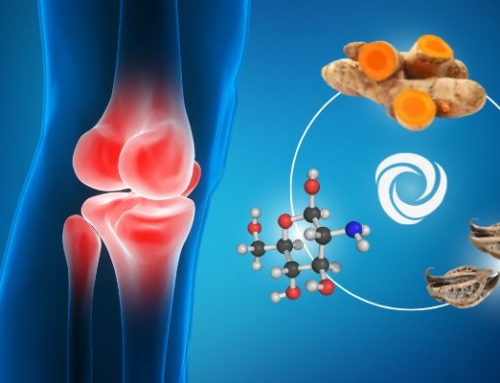EPA and DHA in Omega 3, what do they do?

The EPA & DHA are “anti-platelet aggregation”
When blood platelets stick together, they can form arterial plugs (thromboses) that prevent blood from flowing. This blood clot can detach and block a small vessel in the brain, resulting in a transient ischemic stroke. Omega 3 promote the production of nitric oxide which protects blood vessels.
Moreover, EPA and DHA are anti-atherogenic since they fight against the formation of fatty deposits(1).
Indeed, EPA inhibits the synthesis of thromboxane – prostaglandin promoting platelet adherence – and on the other hand, stimulates the production of prostacyclins that decrease platelet aggregation.
DHA & EPA help fight against oxidative stress
We know that oxidative stress plays a role in the formation of clots. By incorporating itself into the platelets’ membrane, EPA protects them against free radicals and thus reduces their aggregation. A 3-year study of 563 men with hyperlipidemia showed that supplementation with Omega 3 reduced the concentration of platelet adhesion molecules, thereby reducing the risk of atherosclerosis and stroke (2).
Moreover, in chronic heart failure (CHF), cardiomyocytes are disorganized and free radicals are produced in excess, exceeding the neutralizing capacities of enzymatic equipment. Daily supplementation with Omega-3 significantly increases the concentration of superoxide dismutase (SOD), a key enzyme in the fight against free radicals (3).
In conclusion, through a set of complex mechanisms, not yet fully clear, Omega 3 reduce triglyceridemia, platelet aggregation and regulate heart rate and contractility, thus protecting against cardiovascular risk.
Impact of DHA & EPA on the heart from childhood
Several studies have shown the relationship between blood DHA levels and blood pressure in healthy children. Children who are breastfed, either by breast milk or by milk supplemented with Omega 3 have a lower blood pressure at the age of 6-7 years(4). More generally, the needs of a child between 3 and 9 years are 250 mg EPA + DHA and rise to 500 mg between 10 and 18 years, but the levels of these two omega-3 fatty acids are too low in the Western diet. Supplementation with DHA and EPA during pregnancy, lactation and childhood, therefore, plays an important role in cardiovascular development and function(5).
What are optimum needs in DHA & EPA?
Although omega-3s have many virtues for the human body, they are still insufficiently consumed today, since our diet provides us with only 30% of the DRI (Dietary Reference Intakes).
After evaluating the French population’s daily intake of omega-3, the ANSES recommended: “the implementation of a policy aimed at increasing the level of omega-3 intake” (6).
The minimum physiological requirement for DHA and EPA was estimated by the ANSES to be 500 mg/day for an adult. Adults in France receive an average of 350mg of EPA + DHA per day for women and 420 mg/day for men (7). They are therefore below the 500 mg/day guideline. Supplementation of about 100 mg minimum is essential for good memory and optimal brain function.
Activa Human Structure Cardio is made from wild fish oil, rich in omega 3, certified Epax®, the quality label of fish oils. The EPAX® International Quality standard is the reference. EPAX® quality ensures the use of fish caught in ocean areas virgin of any industry to ensure optimum quality and purity, that is, optimum quality. It is analyzed for its content in heavy metals, pesticides or dioxin. EPAX® quality ensures quality controls at every stage of production, from raw materials to the finished product.
Meanwhile, before consuming a fish oil capsule make sure this is certified Epax® quality to guarantee a continuous supply of very high quality and high purity oil.
Sources:
[1] O’Keefe JH Jr & Harris WS: From Inuit to implantation : omega-3 fatty acids come of age. Mayo Clin. Proc. 2000 Jun;75(6):607-14.
[2] Smith BK. & Al.: Exercise plus n-3 fatty acids: additive effect on postprandial lipemia. Metabolism. 2004 Oct;53(10):1365-71.
[3] Mori TA & Woodman RJ: The independant effects of eicosapentaenoic acid and docosahexaenoic acid on cardiovasclar risk factors in humas.2006 Mar;9(2):95-104.
[4] Hjerkinn EM & Al.: Influence of long term intervention with dietary counseling, long chain n-3 fatty acid supplements, or both on circulation markers of endothelial activation in men with long-standing hyperlipidemia. Am. J. Nutr. 2005 Mar;81(3):583-9.
[5] Luostarinen, 1997
[6] Oméga-3. Afssa Février 2009 – www.afssa.fr
[7] EFSA. Scientific opinion – Labelling reference intake values for n-3 and n-6 polyunsaturated fatty acids. The EFSA Journal 1176, 1-11, 2009
Forsyth JS, Willatts P, Agostoni C, Bissenden J, Casaer P, Boehm G. Long chain polyunsaturated fatty acid supplementation in infant formula and blood pressure in later
childhood: follow up of a randomised controlled trial. Br Med J. 2003;326:953.
Koletzko B. Fats for brains. Eur J Clin Nutr 1992 ; 46 Suppl 1: S51-62.
Images Credit: Pixabay






